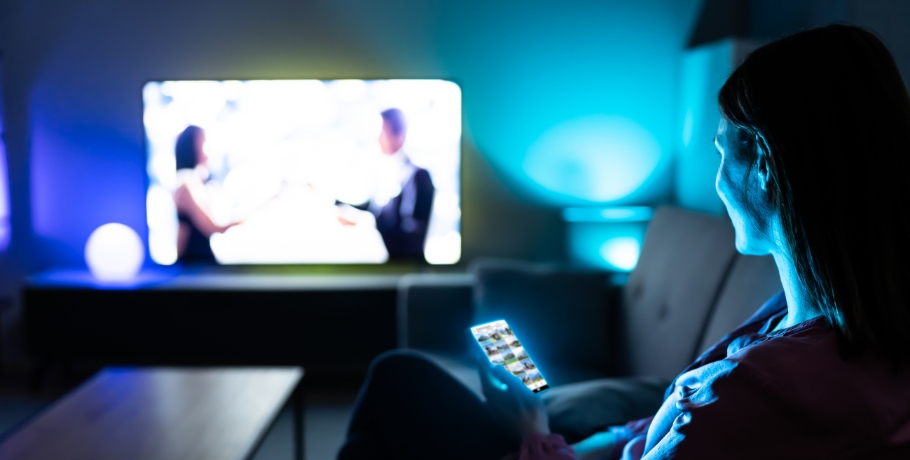
How Does Blue Light Affect Sleep?
Blue light, emitted by digital devices such as smartphones, tablets, and computers, has been shown to significantly impact our sleep. It disrupts the body's natural sleep cycles and affects our ability to fall asleep and achieve quality rest.
Delayed Sleep Onset
Exposure to blue light in the evening can delay sleep onset by suppressing the production of melatonin, a hormone that regulates sleep and wakefulness. Melatonin is secreted by the pineal gland in the brain and is sensitive to light conditions. Blue light signals to the body that it’s time to stay awake, making it take longer to fall asleep.
Disrupted Sleep Cycle
The normal sleep cycle consists of several stages, including REM sleep and deep sleep, which are crucial for recovery and mental health. Blue light can disrupt this cycle, leading to less time spent in the deeply restorative stages of sleep. Disruptions in the sleep cycle can result in increased fatigue and reduced cognitive function during the day. Read more about sleep cycles in our article What Are the Different Stages of Sleep?
Reduced Sleep Quality
In addition to delaying sleep onset and disrupting sleep cycles, blue light can also reduce sleep quality. This may result in fragmented sleep, where you wake up more frequently during the night. Prolonged exposure to blue light before bedtime has been linked to poorer sleep quality and an increased risk of sleep disorders.
Steps to Reduce Blue Light Exposure
To counteract the negative effects of blue light, there are several measures you can take:
- Blue light filters on devices: Many smartphones and computers now have built-in blue light filters that can be activated to reduce blue light exposure in the evening. Unfortunately, these filters are often too weak.
- Using blue light-blocking glasses: Special glasses designed to block blue light can be worn in the evening when using digital devices. Blue Blockers Optic Pro are among the best glasses on the market for blocking blue light.
- Adjusting home lighting: Using lamps with warmer light colours and dimming the lighting in the evening can help create a more sleep-friendly environment.
Alternative Light Sources for Better Sleep
To promote better sleep, consider using alternative light sources:
- Warm light: Lamps with warmer colour temperatures, around 2700K, can help create a calm and relaxing atmosphere.
- Using night lights: Soft night lights can provide enough light to navigate a room without disturbing your sleep.
- Adjusting screen brightness: Reduce screen brightness and activate night mode to minimise blue light emission.
Lifestyle Changes to Improve Sleep Hygiene
In addition to reducing blue light exposure, lifestyle changes can help improve sleep quality:
- Consistent sleep routines: Going to bed and waking up at the same time every day can stabilise your internal clock and improve sleep quality.
- Limiting screen time before bed: Avoiding screens at least one hour before bedtime can help prepare your body for sleep.
- Relaxation techniques before sleep: Practices such as meditation and breathing exercises can promote relaxation and prepare your mind for rest.
What Is Blue Light?
Blue light is a short-wavelength, high-energy light that is visible to the human eye. It occurs naturally in daylight but is also produced by LED lights, computer screens, and mobile displays. Learn more about what blue light is and how it works.
